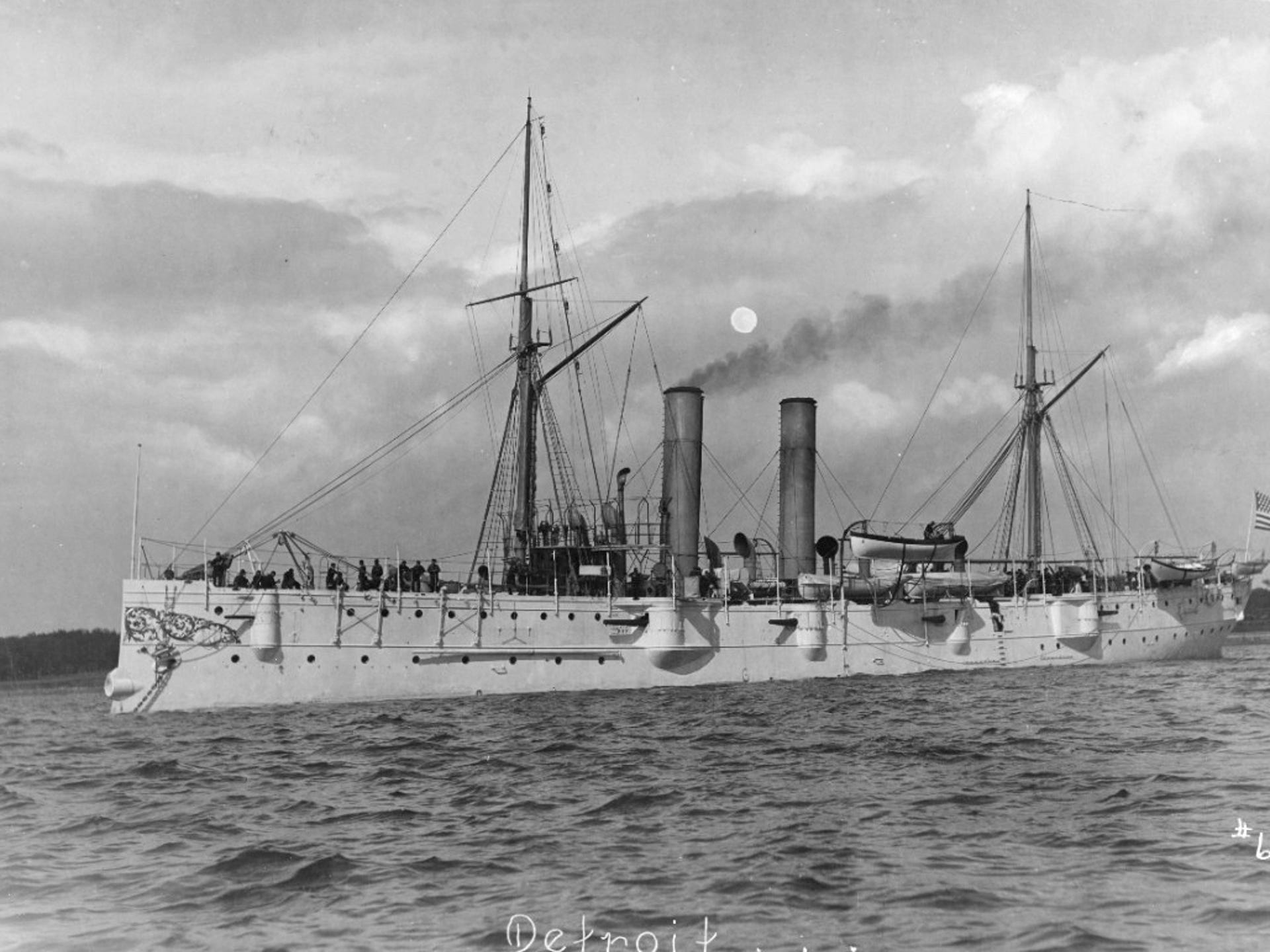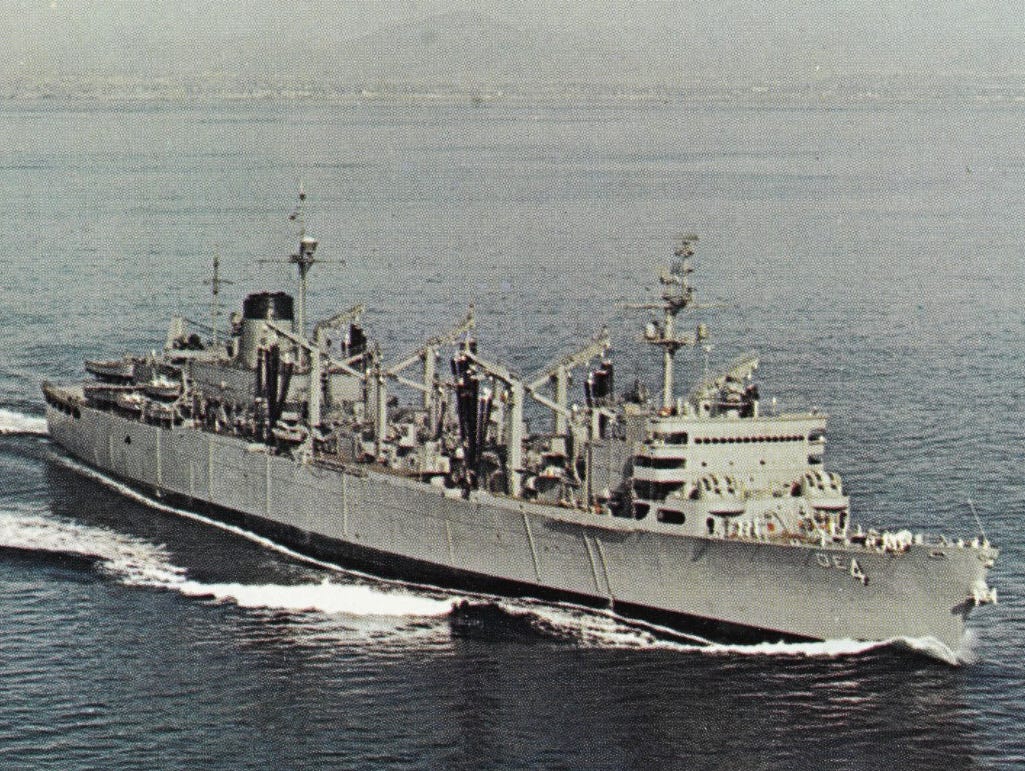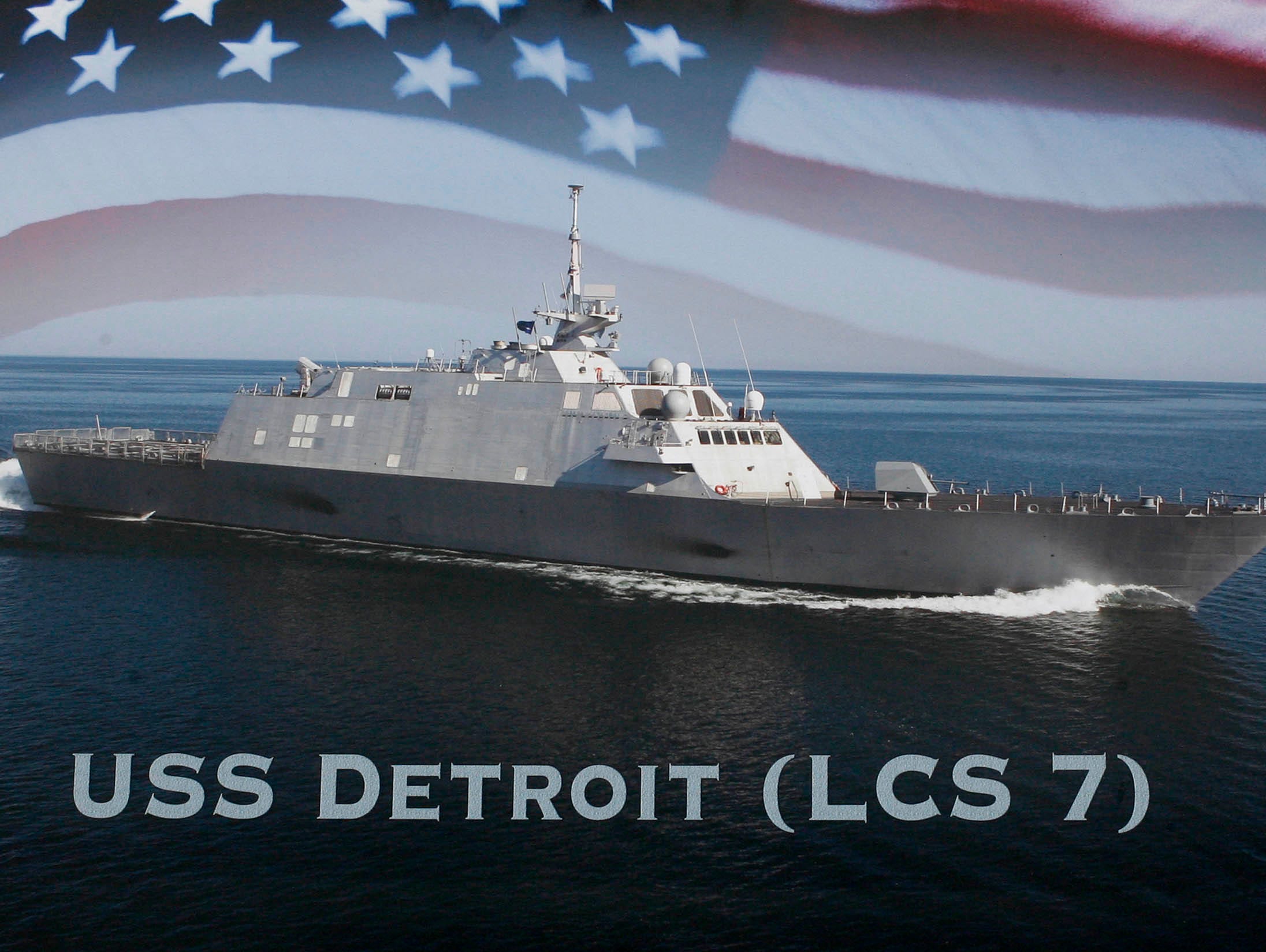
Imagine it this way: It’s like a jet ski powered by Rolls-Royce engines that’s longer than a football field, with room for a helicopter and 98 friends. It’s also not something to mess with.
The new USS Detroit, classified as a littoral combat ship (LCS), cost approximately $440 million.
The USS Detroit is part of a new controversial breed of naval vessel, which operates with speed, agility and is designed to work in shallow waters. It is, according to one of its designers, “not like anything else out there.” It’s designed to be quickly modified, even at sea, to take on different missions.
“The fact (Detroit) has had six ships named after it — most names in the Navy are rarely given more than once or twice,” said historian Mark Evans, who works with the Naval History and Heritage Command.
For the full article, see Jim Lynch, “USS Detroit: A new breed of ship for U.S. Navy“, Detroit News, October 13, 2016
Thousands show for USS Detroit commissioning“,
USS Detroit (LCS 7) Joins Navy’s Fleet“, Navy Live Blog, October 22, 2016.
Bonus: A History of Ships That Bore the Name USS Detroit
Ships bearing the name “Detroit” on behalf of the United States Navy began patrolling the world’s waters over two centuries ago and have played a role in events that shaped history.

Sunset at Amherstburg Naval Yard during the War of 1812 painting by Peter Rindlisbacher. In the midst of supply shortages, the crew of the new flagship HMS Detroit is seen fitting a sail borrowed from the HMS Queen Charlotte anchored on the right. After their defeat on the Lake, the British abandoned this site, and located their new Upper Lakes naval base at Penetanguishene, on Lake Huron.

In the midst of the War of 1812, British and American forces traded control of Detroit following incursions into each others’ territory. Britain commissioned the construction of the HMS Detroit, launched in August 1813. Its relatively small design made the ship ideal for scouting and carrying dispatches. Within a month, the sloop of war was engaged with American vessels in the Battle of Lake Erie, where it was heavily damaged, captured by the Americans and renamed the USS Detroit. “She was 12-guns at the Battle of Lake Erie … not a large ship for the most part,” said Mark Evans, a historian with the Naval History and Heritage Command. “It was a fierce battle. (The Americans) shot her to pieces and captured her from the British. When the smoke cleared, however, what was left of the Detroit was barely seaworthy. American ships towed her out of Lake Erie’s open waters and into the safety of Put-in-Bay. The Detroit stayed there for the next 12 years until she was sold to a private interest.
The second USS Detroit also started out with a different name: The USS Canandaigua. Launched in the midst of the Civil War, she was designed to help the Union choke off Confederate ports in what was appropriately called the Anaconda Plan. With a shallow draft, the Canandaigua could reach places its larger, heavier brethren could not. “You had this combination of blockading Confederate ports from the sea and smaller ships sailing up rivers like the Mississippi and the Missouri … sneaking into various ports,” Evans said. “Ships like the Canandaigua could pursue blockade runners into the narrow estuaries while the larger ones sat offshore to tangle with the heavier ships.” The Canandaigua was renamed the USS Detroit in 1869 and served the states for another six years until decommissioning.

The third USS Detroit was a cruiser built at Baltimore’s Columbian Iron Works and launched late in 1891 and commissioned on July 20, 1893. Her earliest action came in Caribbean and Latin American waters. In countries with uprisings and conflict, the USS Detroit would often land troops, or bluejackets, in order to protect American interests and provide a show of force. During the Spanish-American War, the third USS Detroit was part of a squadron that shelled Fort San Cristobal and Castillo San Felipe del Morrow in May 1898. Despite its success, the USS Detroit was a troubled vessel that served only 14 years. She was decommissioned in 1910.

The fourth USS Detroit is ready for launching in Massachusetts on June 29, 1922 — four years too late for World War I, but well-timed to play a role in the follow-up. Like its predecessor, the ship spent its earliest years in Latin American waters as well as in the Atlantic. The fourth USS Detroit was classified as a light cruiser. It was 555 feet 6 inches long, steam powered and could accommodate 458. The fourth USS Detroit was moored at Pearl Harbor’s Ford Island on Dec. 7, 1941, when the Imperial Japanese Navy executed its infamous attack. The Detroit floated between the USS Utah and the USS Raleigh. A pair of torpedoes struck the Utah, sinking it. Aboard the Detroit, crew members reported a torpedo passed by its own stern — missing by just 30 yards. With many sailors ashore on leave, the USS Detroit’s remaining crew faced the task of getting their ship into the fight. Getting up to steam was huge to begin with with the reduced crew,” Evans said. “But she got up to steam and got underway with guns blazing. It was pretty dramatic.” USS Detroit gunners reported downing a pair of Japanese aircraft, but the reports were not officially confirmed. The Detroit’s after-action report showed the ship fired 10,000 .50-caliber rounds in the battle. With Japan about to take control of the Philippines, the USS Detroit received a load of gold bullion from the submarine USS Trout at Pearl Harbor and delivered it safely to the port of San Francisco. At the end of the war, the USS Detroit accompanied the USS Missouri and other ships to Tokyo Bay for the surrender of Japan, Sept. 2, 1945. It was decommissioned at Philadelphia on Jan. 11, 1946.

In the summer of 1969, the fifth iteration of the USS Detroit emerged from Puget Sound Naval Shipyard in Washington — a fast combat support ship destined for a 35-year career. While not a direct combatant, the fifth USS Detroit served as a support ship in the Vietnam War. At a time when it appeared North Vietnamese would overrun South Vietnamese forces in 1972, more naval firepower was called the region. To help the aircraft carrier USS Saratoga reach the area quickly, the Detroit was dispatched to meet it for a resupply at sea. That allowed the Saratoga to reach Vietnam by taking the unusual route of passing south of the African continent. The fifth USS Detroit also played a combat support role during the early 1990s in the Persian Gulf during operations Desert Storm and Desert Shield. After 9/11, she continually deployed in that region,” Evans said. “She served in the Arabian Gulf and Indian Ocean hunting traffickers — everything from al-Qaida to pirates.”


The sixth USS Detroit undergoing sea trials.
The latest USS Detroit is a new class of Navy vessel, the littoral combat ship (LCS). It is designed to operate in shallow waters — areas where larger members of the U.S. fleet cannot go. The vessel’s 13.5-foot draft makes close-to-shore operation possible, while her water jet propulsion allows for a level of speed and maneuverability no other surface combat ship has. She can do a complete turn within her own 389-foot length. A Freedom variant of the LCS class, USS Detroit was built at Fincantieri Marinette Marine in Marinette, Wisc. and was commissioned in Detroit on October 22nd, 2016.


The USS Detroit in the Detroit River with the Renaissance Center in the background. Detroit dignitaries participating in its dedication in Detroit include Detroit/Wayne County Port Authority chief John Jamian, County Executive Robert Ficano, Deputy Mayor Ike McKinnon and Barbara Levin, wife of U.S. Senate Armed Services Committee Chairman Carl Levin.
Tour the USS Detroit – A 360-degree experience
Source : Jim Lynch, “USS Detroit has long, storied history”, Detroit News, October 13, 2016; updated October 19, 2016.
Robert Allan, “USS Detroit arrives at dock in Detroit River“, Detroit Free Press, October 14, 2016.
